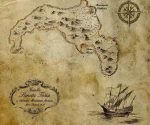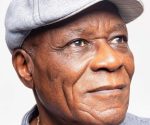The Great Train Journey – part 4
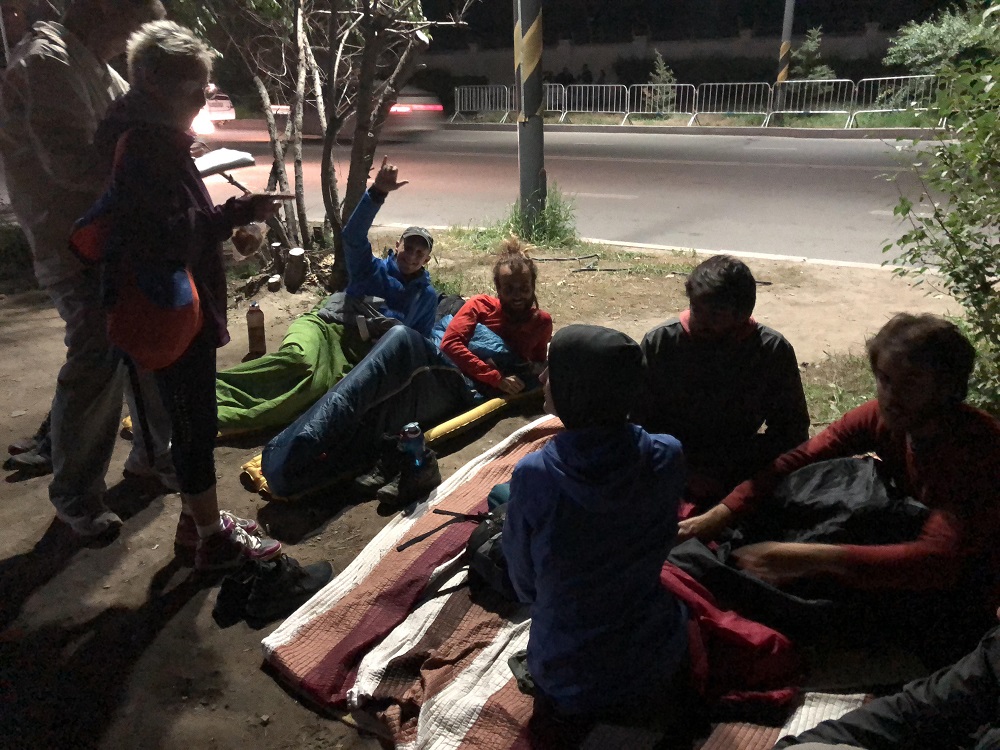
By Hilbert Haar
On a Wednesday afternoon, we wander over to the visa center of the Chinese embassy in Ulaanbaatar. We ask someone why it is open now – since the official opening hours to apply for a visa to China is from 9 a.m. to 12 noon – three times a week. The man says that he is there to pick up his visa.
Come tomorrow at 12, if you want to get in, because they only allow ten foreigners per day to apply, he says. Little did we know that he meant twelve noon, not twelve at midnight.
When we return the following day towards midnight, there is nobody in front of the visa center. We’re the first ones! Or so we thought. Before we know it, two burly Mongolian police officers tell us to move across the street, where people are camping and lying down in sleeping bags.
Turns out that we are number 13 and 14 on the list – no way we’ll get in on Friday; we also need to show confirmation of a flight or train journey out of China – and we don’t have that yet.
This experience changed our travel plans dramatically. We don’t feel like booking that exit flight and then spend the time from Sunday noon until Monday morning on the streets until the Chinese will let us in – and maybe give us a visa. There are no guarantees, a Belgian dive instructor from Namur tells us; he’s been there already four times and every time they ask for something else.
To cut a long story short: we decide to forget about going to Beijing and we book two flights. The first one will take us to Seoul in South Korea, the second one a week later to Hanoi in Vietnam. Our journey into the Far East so far took us with flights from Paris to Poznan, from Poznan to Warsaw, and from Warsaw to Moscow. Then we traveled by train to Irkutsk and from there to Ulaanbaatar in Mongolia. Total distance so far: 7,266 kilometers
The flight dates give us time for a three-day tour through Mongolia’s countryside, with Boogii Bolarmaa, who owns together with her husband the Gobi Girl accommodation where we stay as our guide.
Our driver for this trip is Irka, who does not speak a word of English; but he is an adapt driver and a very friendly chap. Driving out of Ulaanbaatar, we get onto a road that makes potholes in St. Maarten look like a minor inconvenience. If the roads on our island would be like this, it would probably cause a revolution and those responsible for infrastructure would end up with their heads on a stake.
Later on, the roads get better, though Irka constantly has to break for another pothole; at times he has to swerve to the left-hand side of the road to avoid major damages to his Toyota Prius.
After a couple of hours, we arrive at the Chinggis Khaan Museum. You can’t miss it, sitting on the banks of the Tuul River at Tsjonjin Boldog, 54 kilometers east of the capital. The founder of Mongolia towers over the complex on horseback, a stainless steel statue 40 meters high.
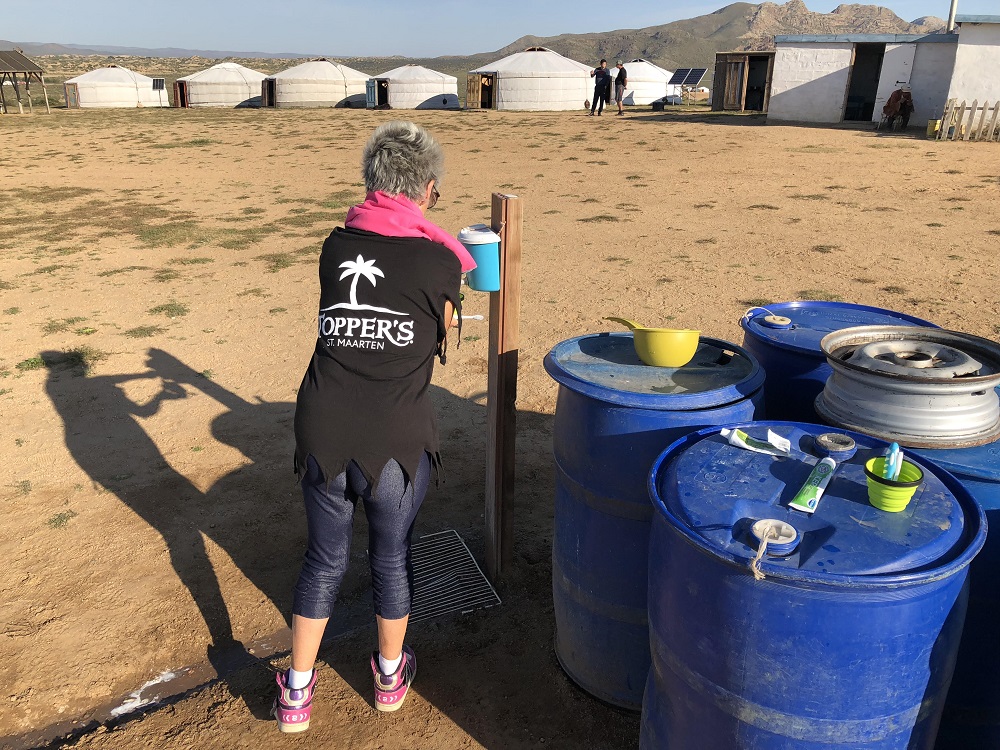
After the museum-stop, we travel to Ghorkhi-Terelj National Park in the province of Tӧv. We end up in a quiet valley, away from the main tourist camps. It is – for our standards – bloody cold here, but the ger that will be our home for one night is made comfortable with a cast-iron heater. Once that thing gets going at night it becomes almost uncomfortably hot.
A ger is a portable round dwelling, nomads in Mongolia use. Goobii says she is able to erect one together with her husband in less than two hours. When it is time to move elsewhere for the winter, Mongolians dismantle their gers, load them on their camels and get on the road.
Facilities in these places are extremely basic; don’t expect a hot shower here – or a shower at all.
The next day we go on a long trek – 280 kilometers outside of Ulaanbaatar, to the so-called semi Gobi desert. The real Gobi desert is 700 kilometers away and we don’t have the time to go there.
Coming from a small island like St. Maarten, what impresses me the most is the seemingly endless Mongolian landscape. The space around us creates a peaceful feeling. The road is straight like an arrow and it goes on forever.
Finally we approach our next camp, a settlement of seven gers managed by friends of Goobii. Irka drives into the desert. There are no roads here, no signs indicating where we should go. I have no sense of direction at all, but Goobii and Irka seem to know where we are going. The Prius is taking a couple of hits – a four-wheel drive would do better in these conditions, but in the end we arrive.
We are welcomed by Bor, who is almost 80 years old, his wife Tsetseg – who is 65 but looks like she could have been ninety as well – and their son Zorigoo. Our ger does not have a heater and it soon becomes obvious why: it is warmer here.
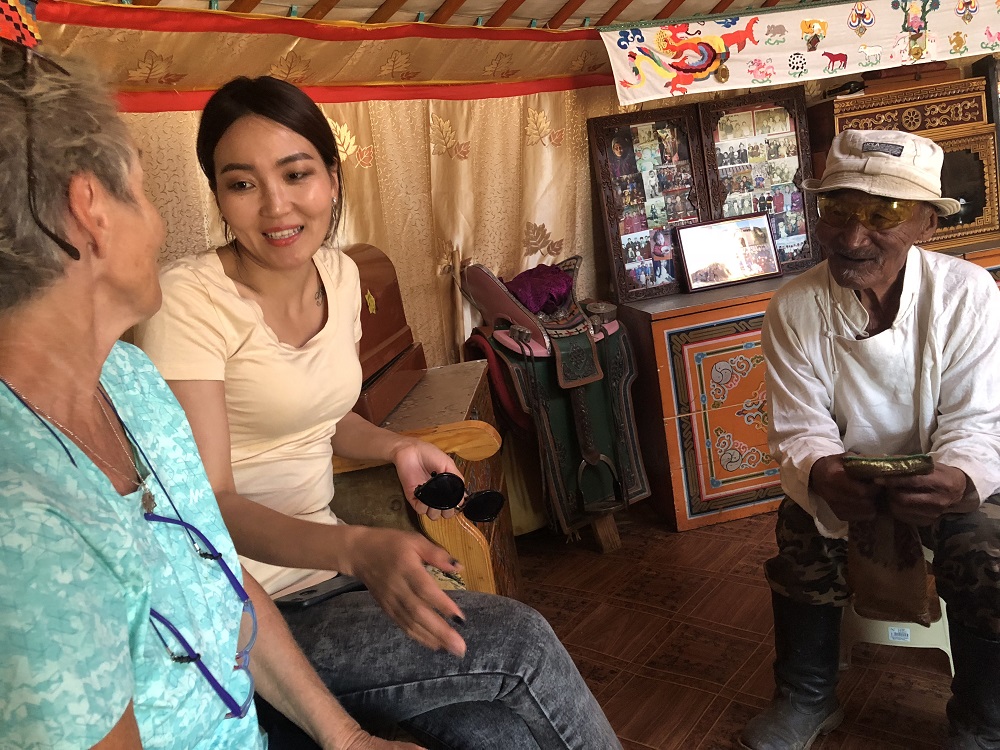
Bor sits down with us in his traditionally equipped ger and produces a small bottle. He offers it first to Goobii, who accepts it grabbing her elbow with her other hand – the Mongolian way of showing respect to your elders. She then opens the bottle and sniffs its content before giving it back to Bor. Irka is next and then I and Myriam get the same hospitable welcome.
Bor and Tsetseg have cows and camels nearby. Tsetseg milks the cows in the evening and later uses the milk to make cheese. I wonder how she manages all this without hardly any facilities – but somehow, she does.
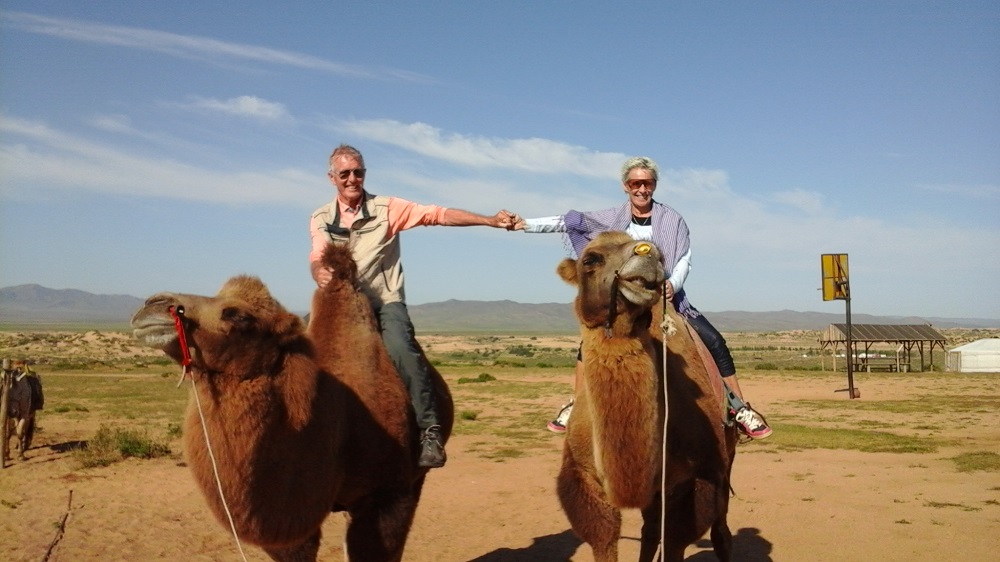
The next morning I have to step out of my comfort zone for a camel ride. Thirty years ago I fell from a camel in Tunesia, hurting my back pretty seriously. I swore I would never get on a camel again, but this day I somehow find the courage to overcome my fear, though Zorigoo’s assurances (“only one in ten falls off a camel here”) gives me little comfort.
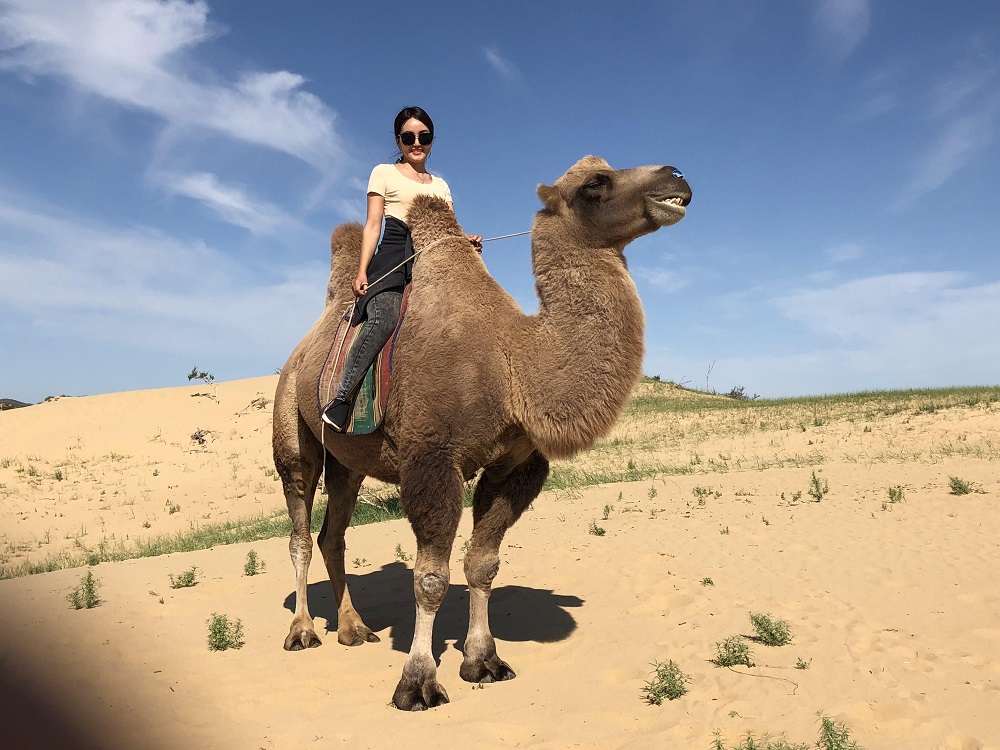
But the ride into the desert is relatively comfortable; my camel does not do anything crazy and I discover that I actually enjoy the ride. Goobii looks almost regal on her camel. When we stop for some pictures in the desert, we have to wait for Zorigoo to let our animals kneel, but Goobii simply jumps down. What a lady that is!
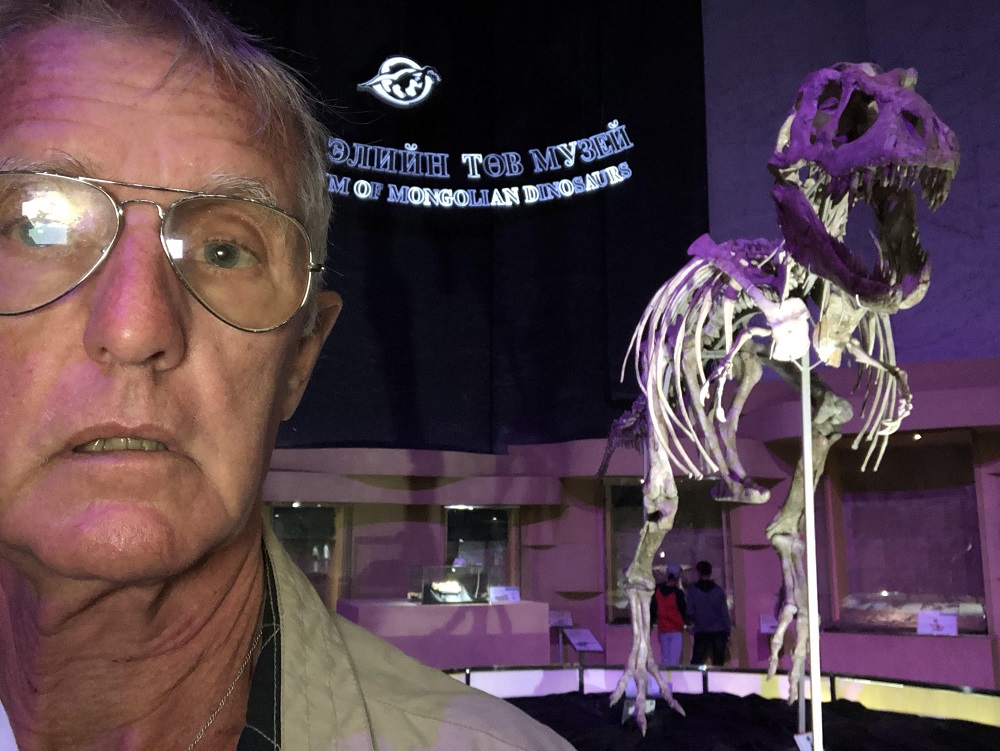
Later that day we travel back to Ulaanbaatar, a trip that takes more than five hours. One more day, a quick visit to the national museum of dinosaurs, and then we’ll be on our way to South Korea – the seventh country we’ll visit during our monster trip.
###
Photo caption: Foreigners camp in front of the Chinese visa center in Ulaanbaatar. Photo Hilbert Haar.
Photo caption: Facilities at the ger camp are beyond basic. Water is stored in drums, and then ladled into a tiny container equipped with a tap. Photo Hilbert Haar.
Photo caption: Myriam and our guide Boogii enjoy the traditional welcome by Bor. Photo Hilbert Haar.
Photo caption: After thirty years I’m back on a camel again. Photo Boogii Bolarmaa.
Photo caption: Boogii looks regal on her camel. Photo Hilbert Haar.
Photo caption: At the dinosaur museum in Ulaanbaatar. Photo Hilbert Haar.














